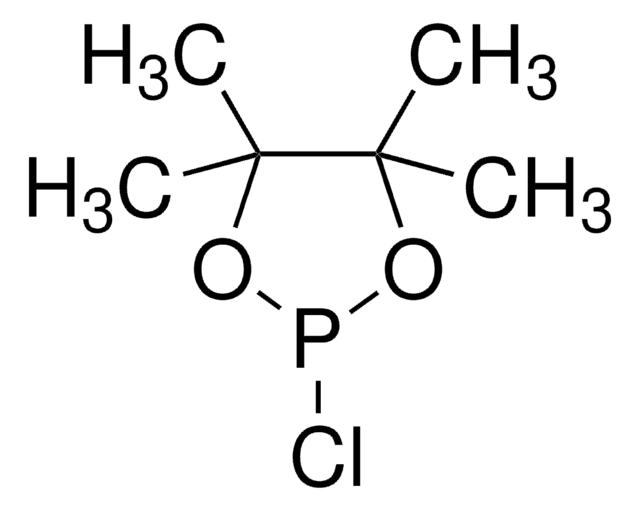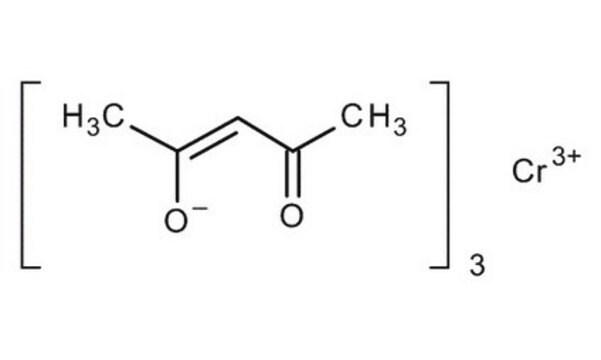202231
Chromium(III) acetylacetonate
97%
Sinonimo/i:
Chromium(III) 2,4-pentanedionate, Cr(acac)3
About This Item
Prodotti consigliati
Livello qualitativo
Saggio
97%
Stato
solid
Impiego in reazioni chimiche
core: chromium
P. ebollizione
340 °C (lit.)
Punto di fusione
210 °C (lit.)
Stringa SMILE
CC(=O)\C=C(\C)O[Cr](O\C(C)=C/C(C)=O)O\C(C)=C/C(C)=O
InChI
1S/3C5H8O2.Cr/c3*1-4(6)3-5(2)7;/h3*3,6H,1-2H3;/q;;;+3/p-3/b3*4-3-;
JWORPXLMBPOPPU-LNTINUHCSA-K
Cerchi prodotti simili? Visita Guida al confronto tra prodotti
Categorie correlate
Applicazioni
- Redox-Activity Catalysis: Discusses the ligand field-activated redox activity of Chromium(III) acetylacetonate, highlighting its use in hydrogenation catalysis (Vinum et al., 2020).
- Diffusion Behavior in Supercritical CO2: A study examining the diffusion behavior of Chromium(III) acetylacetonate in supercritical CO2, aiding in the application of supercritical fluids in materials processing (Cordeiro et al., 2016).
Risultati analitici
Avvertenze
Warning
Indicazioni di pericolo
Consigli di prudenza
Classi di pericolo
Eye Irrit. 2 - Skin Irrit. 2
Codice della classe di stoccaggio
11 - Combustible Solids
Classe di pericolosità dell'acqua (WGK)
WGK 2
Punto d’infiammabilità (°F)
>392.0 °F
Punto d’infiammabilità (°C)
> 200 °C
Dispositivi di protezione individuale
dust mask type N95 (US), Eyeshields, Gloves
Scegli una delle versioni più recenti:
Possiedi già questo prodotto?
I documenti relativi ai prodotti acquistati recentemente sono disponibili nell’Archivio dei documenti.
I clienti hanno visto anche
Articoli
Magnetism and magnetic materials have been of scientific interest for over 1,000 years. More recently, fundamental investigations have focused on exploring the various types of magnetic materials and understanding the magnetic effects created by electric currents.
Il team dei nostri ricercatori vanta grande esperienza in tutte le aree della ricerca quali Life Science, scienza dei materiali, sintesi chimica, cromatografia, discipline analitiche, ecc..
Contatta l'Assistenza Tecnica.











